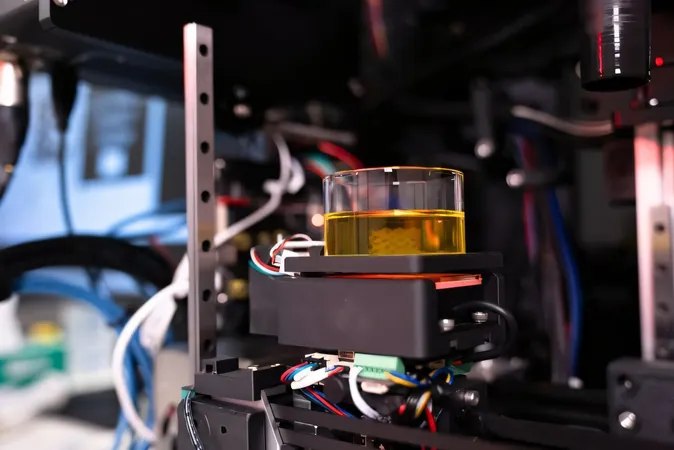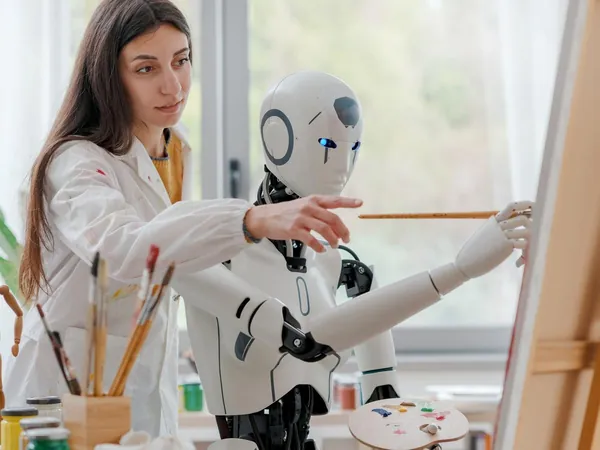
Revolutionary High-Speed 3D Bioprinter Mimics Human Tissues, Offering New Hope in Drug Discovery!
2024-11-09
Author: Jia
Introduction
Biomedical engineers at the University of Melbourne have made a groundbreaking advancement in the field of bioprinting, unveiling a high-speed 3D bioprinter that can create structures closely resembling a wide variety of human tissues, from the delicate composition of brain tissue to the sturdiness of cartilage and bone. This innovative technology could radically transform cancer research and drug development, providing researchers with a powerful tool for replicating specific organs and tissues.
Ethical Implications
With this cutting-edge system, the potential for pharmaceutical therapy development skyrockets, significantly reducing the reliance on animal testing in drug discovery—a move that many in the scientific community have been advocating for, in pursuit of more ethical research methods. The findings have been professionally documented in the esteemed journal *Nature*, highlighting the significance of this breakthrough.
Technological Advancements
Associate Professor David Collins, the head of the Collins BioMicrosystems Laboratory at the University of Melbourne, emphasized the technological leap in bioprinting. He explained that this approach not only accelerates the printing process but also dramatically enhances the accuracy of cell positioning within the printed tissues. Traditionally, incorrect cell placement has been a critical stumbling block for most 3D bioprinters, often leading to a failure in replicating the complex architecture of human tissues accurately.
Precision in Bioprinting
Comparing this bioprinting technology to a well-designed car, Collins emphasized the importance of precision. Just as a car functions properly only when mechanical parts are meticulously arranged, human tissues require cells to be correctly organized for proper functionality. Unlike conventional 3D bioprinters, which rely on passive cell alignment, this innovative system employs acoustic waves generated by vibrating bubbles to actively position cells during the bioprinting process. This proactive approach gives cells a head start in developing into the intricately structured tissues inherent to the human body.
Challenges with Traditional Bioprinters
Current commercial 3D bioprinters typically utilize a slow, layer-by-layer method, which presents numerous challenges, including the extended time it takes to print living cells—often jeopardizing their viability. The processes can take hours to complete, and transferring the fragile printed structures to standard laboratory plates for imaging and analysis is fraught with risk, often compromising their integrity.
Revolutionary Methodology
The University of Melbourne team has revolutionized this methodology by implementing an advanced optical-based system that abolishes the need for the conventional layer-by-layer approach. Their innovative bioprinter is capable of fabricating cellular structures in a matter of seconds—up to an astonishing 350 times faster than traditional techniques—while achieving cellular resolution that accurately replicates human tissues.
Impact on Cell Viability
By significantly reducing printing time and enabling direct printing into standard laboratory plates, the researchers have reported a notable increase in cell survival rates, while also minimizing physical handling. This means that the printed structures maintain their integrity and sterility throughout the process, a crucial aspect for any biomedical application.
Expert Insights
Ph.D. student Callum Vidler, the lead author of the study, expressed excitement about the repercussions of this groundbreaking technology within the medical research community. He noted, “Biologists see the limitless potential of bioprinting; however, previous methods have yielded low output, stalling progress.” The team’s advancements in speed, precision, and reliability create a vital link between laboratory research and clinical applications.
Collaborations and Future Directions
Since the introduction of this revolutionary bioprinter, the researchers have collaborated with around 60 professionals from prestigious institutions like the Peter MacCallum Cancer Centre, Harvard Medical School, and the Sloan Kettering Cancer Centre, receiving overwhelmingly positive feedback.
Conclusion
This extraordinary innovation holds promise not only for drug development and cancer research but may also open doors to personalized medicine strategies, where bioprinted tissues could be used for patient-specific treatments. The implications are immense—could this be the key to the next major breakthrough in healthcare? The future of medicine may very well be shaped by this astounding technology!


 Brasil (PT)
Brasil (PT)
 Canada (EN)
Canada (EN)
 Chile (ES)
Chile (ES)
 España (ES)
España (ES)
 France (FR)
France (FR)
 Hong Kong (EN)
Hong Kong (EN)
 Italia (IT)
Italia (IT)
 日本 (JA)
日本 (JA)
 Magyarország (HU)
Magyarország (HU)
 Norge (NO)
Norge (NO)
 Polska (PL)
Polska (PL)
 Schweiz (DE)
Schweiz (DE)
 Singapore (EN)
Singapore (EN)
 Sverige (SV)
Sverige (SV)
 Suomi (FI)
Suomi (FI)
 Türkiye (TR)
Türkiye (TR)